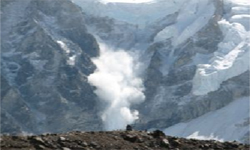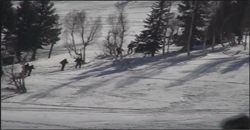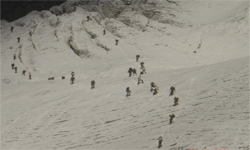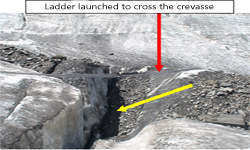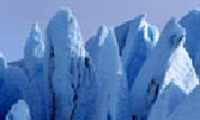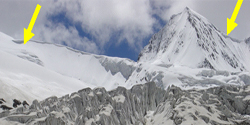Mountain Hazards
| Introduction | ||||||||||||||||
|---|---|---|---|---|---|---|---|---|---|---|---|---|---|---|---|---|
1. Hazards can be termed as natural (caused by natural occurrence) and man-made (caused by an individual, such as lack of preparation, carelessness, improper diet, equipment misuse). There are two kinds of hazards people face while operating in the mountains ie subjective and objective. |
||||||||||||||||
Subjective Hazards |
||||||||||||||||
2. Subjective hazards are created by humans; for example, choice of route, companions, over exertion, dehydration, climbing above one’s ability, and poor judgment. |
||||||||||||||||
(a) Falling. Falling can be caused by carelessness, over-fatigue, heavy equipment, bad weather, over estimating one’s ability, a hold breaking away, or other reasons. |
||||||||||||||||
Objective Hazards |
||||||||||||||||
3. Objective hazards are caused by the mountain and weather and cannot be influenced by a person operating in mountains. Objective hazards are further classified as:- |
||||||||||||||||
(a) Snow Group Hazards. The difficulties offered by snow in snow bound and glaciated areas are called snow group hazards. Different snow group hazards are as follows:- | ||||||||||||||||
(i) Avalanche. Avalanche is a massive mass of unstable snow and / or ice that can come hurtling down a slope and brings with it snow, ice, rocks, soil, trees etc. |
|
|||||||||||||||
|
(ii) Soft Snow. Excessive snow fall makes movement very difficult. Movement on soft snow is very slow and tiring. Trugger shoes or skis can be used to move easily on soft snow |
|||||||||||||||
(iii) Glaciers. Movement on glaciers is difficult especially while climbing the slopes. Ice axe and crampons are used to move in glaciers |
|
|||||||||||||||
|
(iv) Crevasses. Crevasses are formed when a glacier moves over a slope and makes a bend, or when a glacier separates from the rock walls that enclose it. They can be very wide and deep making movement very difficult on glaciers. Crevasses can be crossed by constructing rope bridges or by launching a ladder |
|||||||||||||||
(v) Hanging Glaciers and Seracs. Are pinnacle or tower of ice. Avoid them if possible. They will fall without warning regardless of the time of day or time of year. One cubic meter of glacier ice weighs 910 kilograms. If one needs to cross these danger areas, do so quickly and keep an interval between each person |
|
|||||||||||||||
|
(vi) Cornice. A consolidated snow bank projecting over the edge of a ridge, plateau or corrie, and formed by prevailing winds. They may be temporary which are very likely to avalanche, or they may be permanent. While selecting a route in snow bound areas avoid moving below and over a cornice |
|||||||||||||||
Training
The Jawahar Institute of Mountaineering and Winter Sports (JIM&WS).
Contact Us
The Jawahar Institute of Mountaineering and Winter Sports (JIM&WS)
Address: Nunwan Pahalgam (J&K)
Telephone: 01936-243129
01936-243129 (Training Section)
01936-243002 (PA to Principal)
9906967831 (Training Clerk)
9906967822 (Sub centre, Sanasar)
9906967821 (CPIO)
E-mail CPIO: principal@jawaharinstitutepahalgam.com
Fax:01936-243129
E-mail: principal@jawaharinstitutepahalgam.com
© Copyright JAWAHAR INSTITUTE OF
MOUNTAINEERING & WINTER SPORTS NUNWAN, PAHALGAM.Corporate Mail
Design, Development and Hosting of Website by Say Technologies




